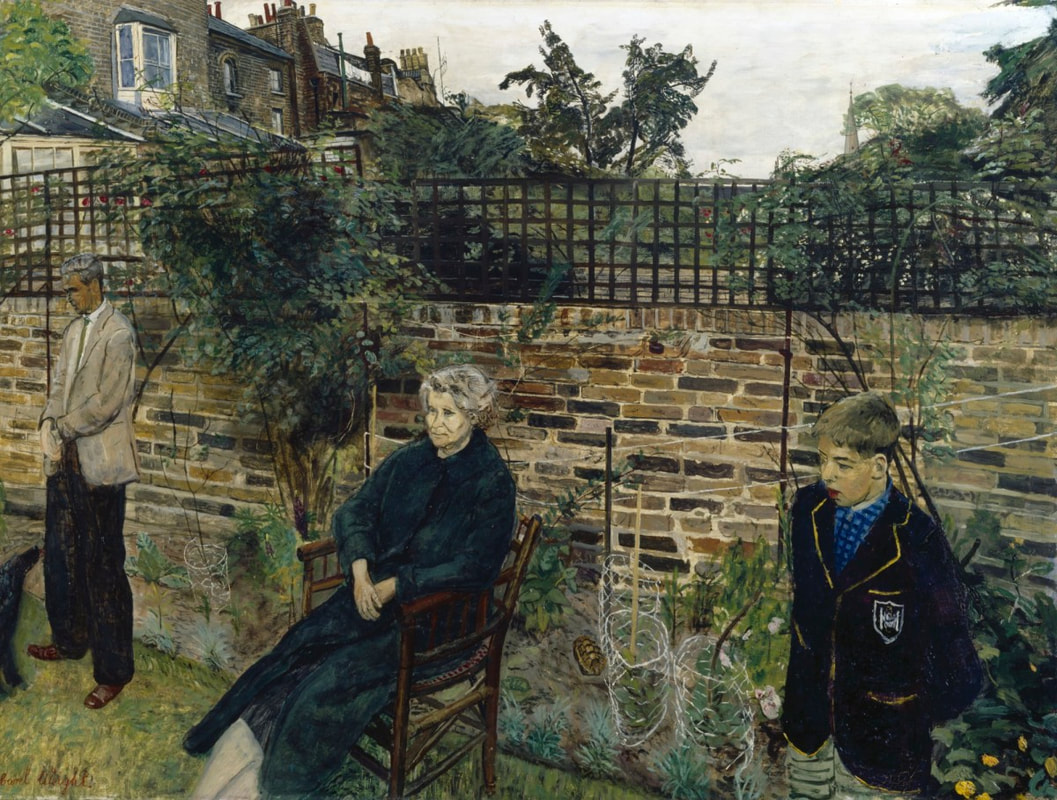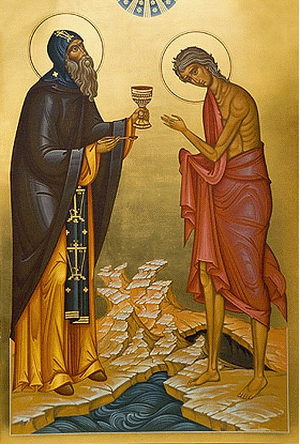|
When you look at this painting what do you see? Social distancing, isolation? ‘The Silence’, by Carel Weight addresses the theme of human isolation. The artist wished it to convey his belief that although people join to perform identical rituals, they are essentially solitary individuals. To emphasise this, the three figures never met and were painted separately. The painting shows three people (almost three generations), motionless, silent, enclosed in their walled space, protected against the outside world and one another. Not one of them appears to be at peace. They sit or stand stiffly, coldly, worryingly remote from any family closeness.
As social distancing and self-isolating become essential to our daily living; there appears to be a increasing interest in ‘Solitaries’ Those who chose an eremitic or hermitic life, living in seclusion from society. I have recently read a book that explores the social history of silence. A significant portion of this book is devoted to penal incarceration; specifically, the introduction of solitary confinement and Benjamin Rush’s misguided belief that, by isolating convicts in this way, they would gain an awareness of the presence of God and hear his voice. This Sunday, 5th Sunday of Great Lent, we remember that wonderful Saint, Mary of Egypt. Our venerable mother Mary was a desert ascetic who repented, having lived a life given “unrestrainedly and insatiably … to sensuality”. She lived during the 6th century and passed away in a remarkable manner in 522. [You can read the full story of the life of Mary of Egypt using the link - The Life of Mary of Egypt] Mother Mary, like the Anchorite Julian of Norwich and the many other Religious Solitaries, chose a life of silence, unlike those subject to penal punishment. They chose a life of three-fold silence; silence from words, silence from desires and silence from thoughts. A choice made to allow them to respond to the belief that we all belong to God and are loved by him from eternity to eternity. That this brief life is just an opportunity for us to say, “I love you, too! It is this desire to love and be loved by our Lord, that motivated these saints. It was this love for our Lord that led them to understand that any peace that rests upon externals is inevitably fragile. It was from a love and faith in Christ that they could, with St Anatoly of Optina, declare that “The best fast is to patiently endure everything that God sends”. These saints understood that with a full larder, no financial trouble, happy relationships, an interesting career: then the world is beautiful to us, and we are at peace. But they understood too the true value of such peace. At any moment accident or natural change may disrupt or destroy it. This peace is an uncertain peace! They also understood that to simply isolate oneself is not to be at peace. There is no lasting peace that does not rest upon a sense of life having meaning. For Mary of Egypt, Julian of Norwich and for all our venerable fathers and Mothers that meaning was loving and following our Lord;’ knowing that one can only be a full person in Christ. Our Gospel reading for the 5th Sunday of Great Lent (Mark 10: 32-45) begins with the disciples journeying with Jesus to Jerusalem and His Passion. Let us together, make that same journey together! We may not be able to go to church but that must not stop us being the Church! Holy mother Mary, pray to God for us.
1 Comment
|
Parish Blog
This mainly contains homilies and messages from our priests, although there is some scope to share thoughts and interesting articles which we may want to share with others Archives
October 2022
Categories |


 RSS Feed
RSS Feed